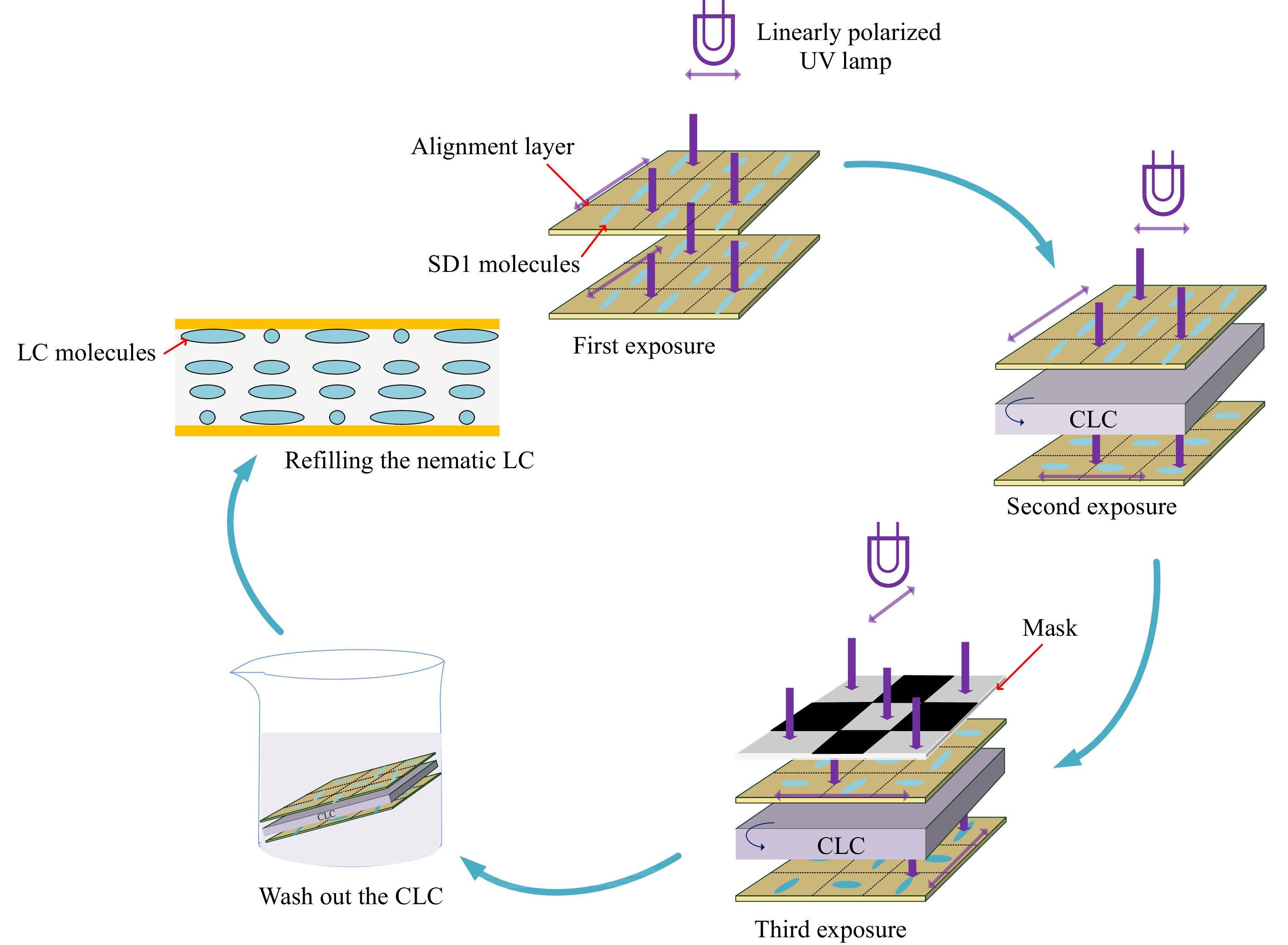| Jan 05, 2024 |
Polarization-independent liquid-crystal phase modulators
(Nanowerk News) Liquid-crystal (LC) phase modulators are widely used in optical systems because of their advantages of low power consumption, light weight, flexible bandwidth adjustment, and non-mechanical movements. However, most LC phase modulators are polarization-sensitive, meaning that they affect the phase of light differently depending on its polarization. This can limit their performance and functionality in some applications.
|
Key Takeaways
|
|
The advancement of polarization-independent LC phase modulators, employing a new light-controlled azimuth angle (LCAA) process, enhances optical system capabilities with low power, flexible bandwidth, and non-mechanical movements.
This novel approach, utilizing multi-microdomain orthogonally twisted (MMOT) structures, offers precise alignment, high phase depth, and low polarization dependence, ideal for diverse applications like optical communications, wearable devices, and displays.
The potential of these single-layer MMOT structures in revolutionizing optical applications lies in their simple structure, adaptability, and enhanced efficiency, promising improvements in optical communications systems and new wearable device functionalities.
|
 |
| Process for fabricating LC phase modulator with the MMOT structure. (© Light: Advanced Manufacturing)
|
The Research
|
|
There are two main approaches to realizing polarization-independent LC phase modulators. The first approach is to use polarization-independent LC materials, such as polymer-stabilized blue-phase liquid crystals (PS-BPLCs). However, PS-BPLCs require high driving voltages, which can make them impractical for some applications.
|
|
The second approach is to change the alignment of the LC directors. One way to do this is to use a double-layer LC cell, which consists of two LC cells stacked on top of each other with their LC directors oriented orthogonally. This allows light to be decomposed into two orthogonal components, each of which experiences the same phase modulation. However, double-layer LC cells are complex and difficult to manufacture.
|
|
Another way to achieve polarization-independent LC phase modulation is to use orthogonal photoalignment. This involves using a special photoalignment layer that creates orthogonal alignment domains in the LC. However, it is difficult to achieve precise alignment using this method.
|
|
In a new paper published in Light: Advanced Manufacturing ("
Polarization-independent liquid-crystal phase modulator with multi-microdomain orthogonally twisted photoalignment"), a team of scientists led by Professor Jiangang Lu have developed a new approach to polarization-independent LC phase modulation.
|
|
Polarization-independent LC phase modulation is based on a light-controlled azimuth angle (LCAA) process. The LCAA process uses the optical rotatory effect of cholesteric liquid crystals (CLC) to create single-layer, multi-microdomain, orthogonally twisted (MMOT) structures.
|
|
MMOT structures are composed of multiple microdomains with orthogonally aligned LC directors. The LCAA process uses a patterned light beam to control the alignment of the LC directors in each microdomain. This allows the researchers to create MMOT structures with precise alignment.
|
|
LC phase modulators with a single-layer MMOT structure have the potential to be both polarization-independent and have a large phase depth. This makes them ideal for a wide range of applications, including optical communications, wearable devices, and displays.
|
|
A light-controlled azimuth angle (LCAA) process can be used to fabricate a multi-microdomain orthogonally twisted (MMOT) device with low polarization dependence, high phase retardation, and a simple structure. The alignment angle between the top and bottom substrates in the LCAA process and the mask grid size of the MMOT structure can be tailored to meet the requirements of different applications.
|
|
This device has the potential to revolutionize the way we use light in a variety of applications. For example, it could be used to create new types of optical communications systems that are more efficient and reliable. It could also be used to develop new types of wearable devices that can display information in a more clear and concise way.
|

